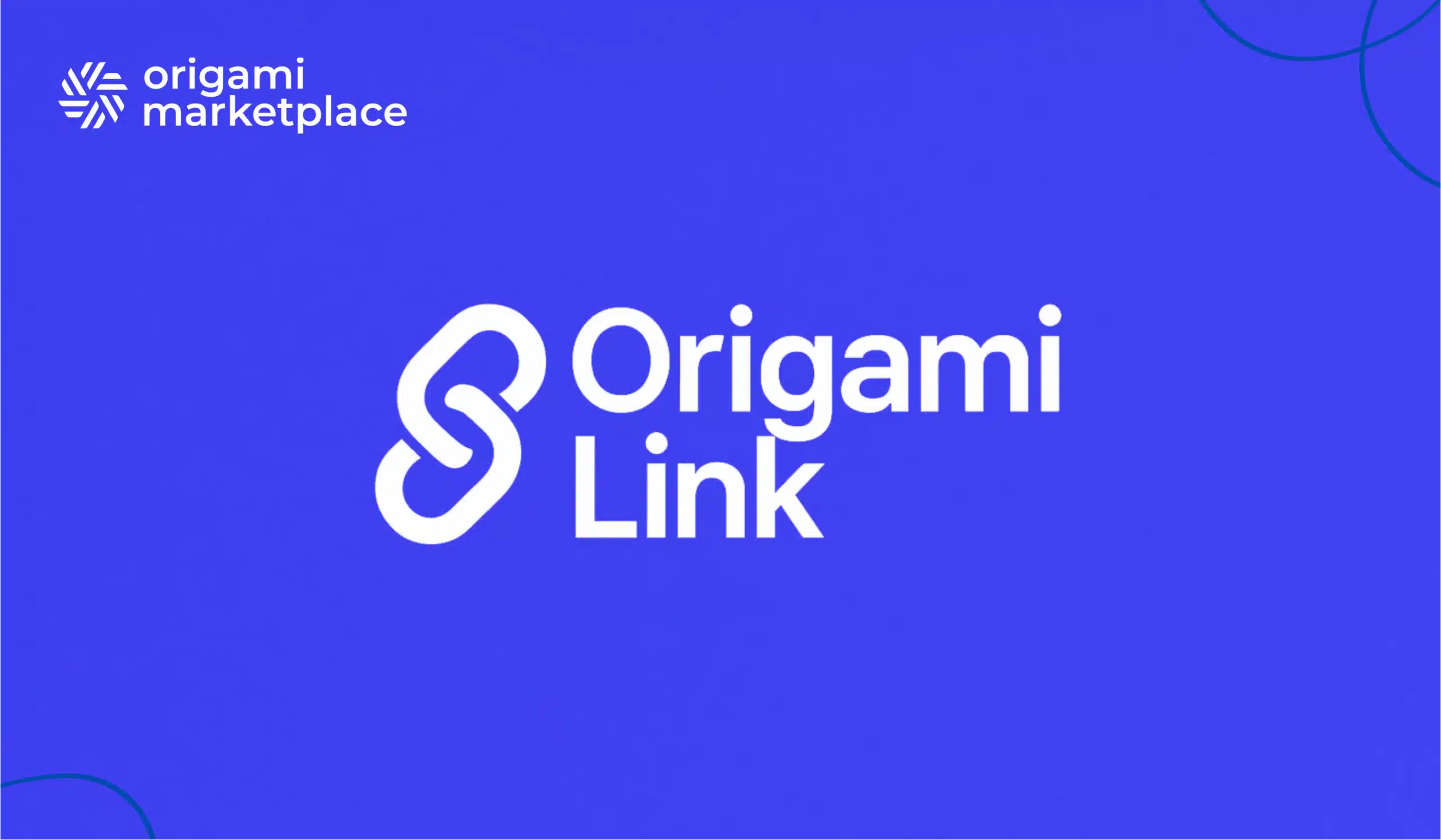Scoping a multi-vendor marketplace: Moving from idea to reality.
- Emeline Kerloch
- 15 minutes reading

As we all know, e-commerce has grown exponentially to become an essential part of the global economy. In recent years, the growth of e-commerce and marketplaces has accelerated at an unprecedented rate, driven by technological innovation and changing consumer habits. In 2021, global e-commerce sales reached dizzying heights, exceeding $4.9 trillion, with projections of more than $6.3 trillion by 2024, according to data from Statista. This spectacular growth not only reflects the full adoption of online shopping in the consumer habits of customers around the world, but also underscores the growing importance of digitization for businesses of all sizes. Given these figures, many people are eager to take their business online. However, launching a multi-vendor marketplace requires an understanding of market trends, a full grasp of consumer needs, and a solid foundation in technology.
Creating a project requires validation of a number of steps to ensure a successful multi-vendor marketplace launch.
These steps that we are about to present to you are:
- Step 1: Conceptualize your project.
- Step 2: In-depth market research, including competition and industry needs.
- Step 3: Create the Business Model Canvas.
- Step 4: Income options.
- Step 5: Choose your online sales model.
- Step 6: Create your platform specifications.
- Step 7: Create the sales deck.
- Step 8: Choose the right technology for your multi-vendor marketplace launch.
- Step 9: Regulatory and compliance for your multi-vendor marketplace.
Step 1: Conceptualize your project.
The essence of any project lies in its ideation phase, a crucial moment that lays the foundation for all the steps to come. This stage is often born from an inspiration, either from an unmet need in the current market, an opportunity to improve an existing shopping experience, or the project owner’s own experience. However, this initial idea is just a seed that needs to be carefully analyzed and developed through a series of strategic considerations and market analyses.
At this stage, you’ve developed an initial vision of what you want to offer and in what sector, but it’s still an intuition that needs to be validated. The exact form your project will take has yet to be defined: will it be an e-commerce site, a multi-vendor marketplace, or something else?
The ideation phase requires you to ask yourself the right questions: What needs does my idea address? Who are my target users and what are their buying habits? Should I be the only one selling on my site, or should I look to third parties to fulfill my value proposition? Who are the existing players in this market, and how can I differentiate myself from the established competition? Answering these questions will help you refine your initial idea, clarify your value proposition, and define your market positioning.
To clarify your idea and start thinking about its feasibility, it is a good idea to fill out a first version of the Business Model Canvas. This will allow you to reflect on your goal, define a clear value proposition, and identify the initial needs and resources required to bring your project to life. This business model canvas will evolve as the project progresses.
At this stage, you should be able to clearly answer the following questions.
- What need does my project address?
- What is my value proposition?
- Who will be my customers?
- What resources, both human and financial, can I allocate to this project?
Step 2: In-depth market research, including competition and industry needs.
Once you’ve sketched out an initial vision for your project, it’s time to conduct in-depth market research. Because even with the best business idea, if your market is crowded with competitors offering the same value proposition, or if your platform doesn’t fill a real need, your business may struggle to get off the ground. We also recommend that you choose an area of business that you’re passionate about, where you can invest hours of work and communication without getting bored. Starting in an area you’re passionate about will give you a better understanding of the opportunities that exist and the expertise you’ll need to succeed.
To begin your market research, take stock of the various players in your industry and identify their value proposition in the marketplace. Three main tools will be your allies in this process: SWOT analysis, PESTEL analysis, and the creation of a competitive matrix.
Go deeper with a SWOT analysis.
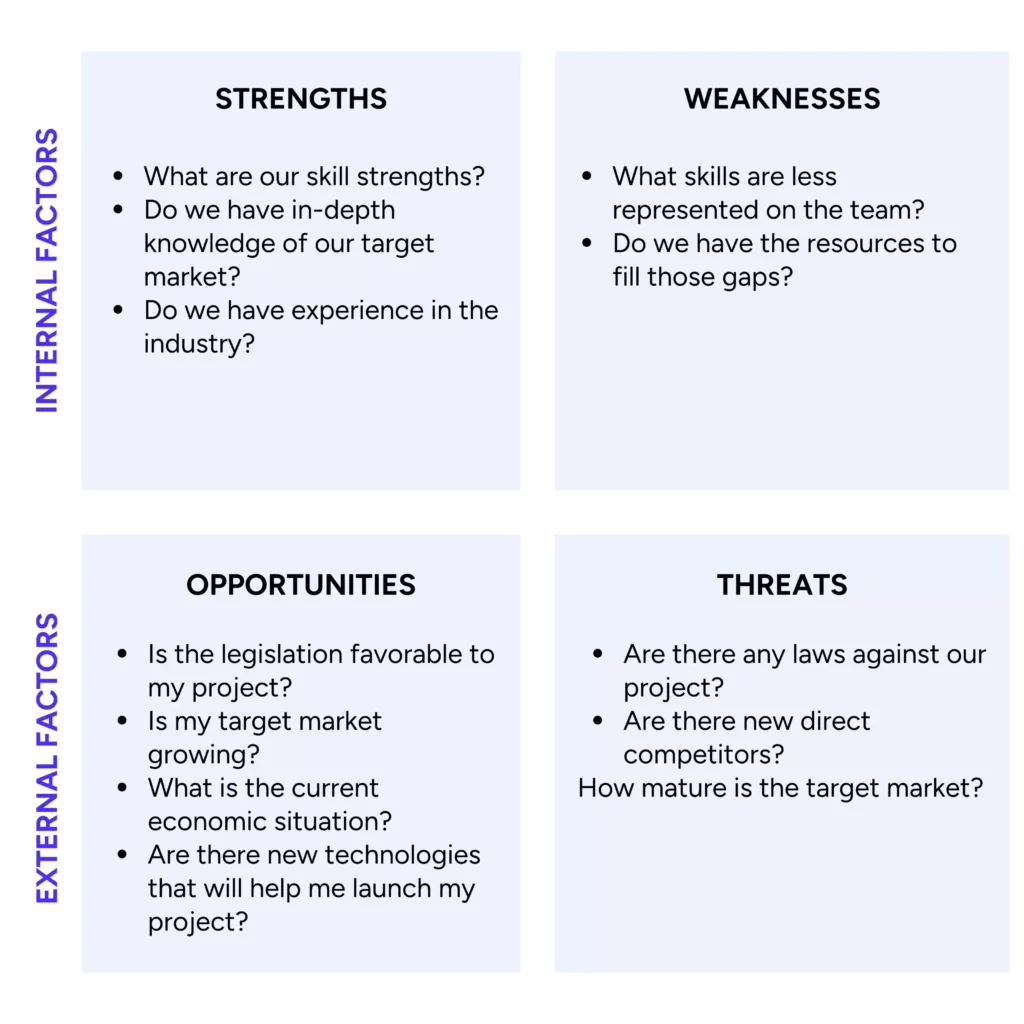
A SWOT analysis is like a compass in a storm. It helps you identify the strengths, weaknesses, opportunities, and threats associated with your project. Strengths and weaknesses are internal to your organization and include your resources, technology, and expertise. Opportunities and threats are external and can arise from changes in the market, legislation or competition. A thorough SWOT analysis allows you to develop a customized strategy that capitalizes on your strengths and avoids potential obstacles when your will launch your multi-vendor marketplace.
Scan the environment with a PESTEL analysis.
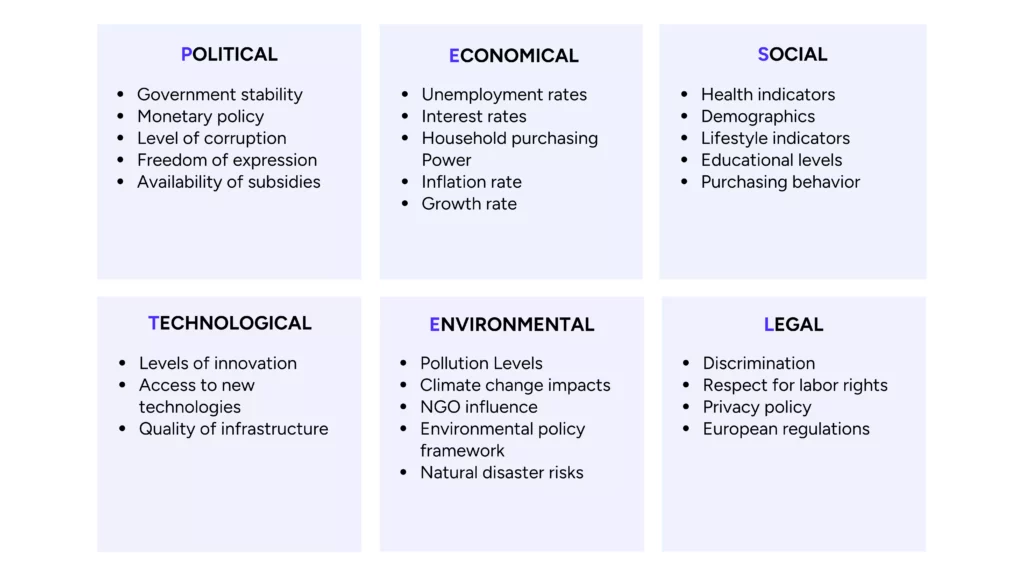
The PESTEL analysis perfectly complements the SWOT analysis by providing a panoramic view of the macro-economic environment. This tool examines the political, economic, socio-cultural, technological, environmental, and legal factors that can affect your market. By analyzing these dimensions, you’ll be able to anticipate major changes and adapt your strategy accordingly. For example, a growing trend toward environmental responsibility can be both a challenge and an opportunity for the launch of your multi-vendor marketplace.
Create a competitive matrix to map the market.
Creating a competitive matrix is essential to understanding the competitive landscape in your industry. This tool helps you identify your direct and indirect competitors, assess their strengths and weaknesses, and understand their market positioning. By analyzing your competitors’ products, pricing, distribution channels, and marketing strategies, you can identify untapped niches or areas for improvement in your offering. The competitive matrix is an effective guide to differentiating your e-commerce or multi-vendor marketplace and finding your place in the sun.
These three analyses form the foundation of your go-to-market strategy. By combining them, you’ll gain a full understanding of your market environment, which is essential for making informed decisions and effectively positioning your e-commerce or marketplace.
Talk to market experts.
Beyond “theoretical” research, it’s important to discuss your project with industry experts or potential customers to get feedback and suggestions. Feel free to talk to people with experience in e-commerce or multi-vendor marketplace creation. These conversations can be critical to the success of your project, providing you with valuable information you won’t find in studies.
Step 3: Create the Business Model Canvas.
If you created a first draft of your Business Model Canvas in Step 1, now it’s time to create a more complete version. With a clear vision of the market, its characteristics, players, and emerging opportunities, you can add more detail to your document.
There are several elements to consider, depending on the model you’re planning. If you’re planning to launch a simple e-commerce site, you’ll need to consider “hidden” costs, such as those associated with site maintenance and hosting. In the case of a multi-vendor marketplace model, remember that in this three-way structure of operator, seller, and buyer, the sellers are also your company’s customers. So you need to allocate resources to acquire, support, and retain them.
Don’t underestimate the time and commitment required to integrate good sellers into your platform, otherwise you run the risk of not having enough sellers by the time you launch your multi-vendor marketplace, which could jeopardize your project from the start. Even for a C2C marketplace, it’s imperative to get your first sellers on board before launching your platform. This way you don’t give your customers the impression of an “empty shop”. This would create frustration and discourage them from coming back or talking positively about your platform. Recruiting and onboarding sellers means allocating resources before launch.
Regardless of the type of marketplace you’re considering, it’s possible to automate processes, but human interaction is still necessary to manage relationships with sellers and customers.

In the context of a C2C platform, Olivier Roche, co-founder of Biked, shares an effective strategy he implemented when launching his C2C platform with over 4,000 items from the start:
“From the very first development phase, we understood the importance of building a consistent offer. Our trick was to organize a pre-launch event about 15 days before the official launch, which was accessible only to sellers. This approach allowed Biked to launch with 4,000 products available.”
- An entrepreneurial spirit that doesn’t hesitate to explore, test and solve problems.
- In-depth knowledge of the target market and a constant interest in its evolution.
- Project management skills to make effective and comprehensive decisions.
- Marketing and content creation skills to build and promote your brand.
- Technical skills, although these can be outsourced, especially if you are using a SaaS solution like Origami Marketplace, the technical skills required to launch your multi-vendor marketplace project are much more affordable.
- E-commerce skills, especially in understanding transaction models and user experience.
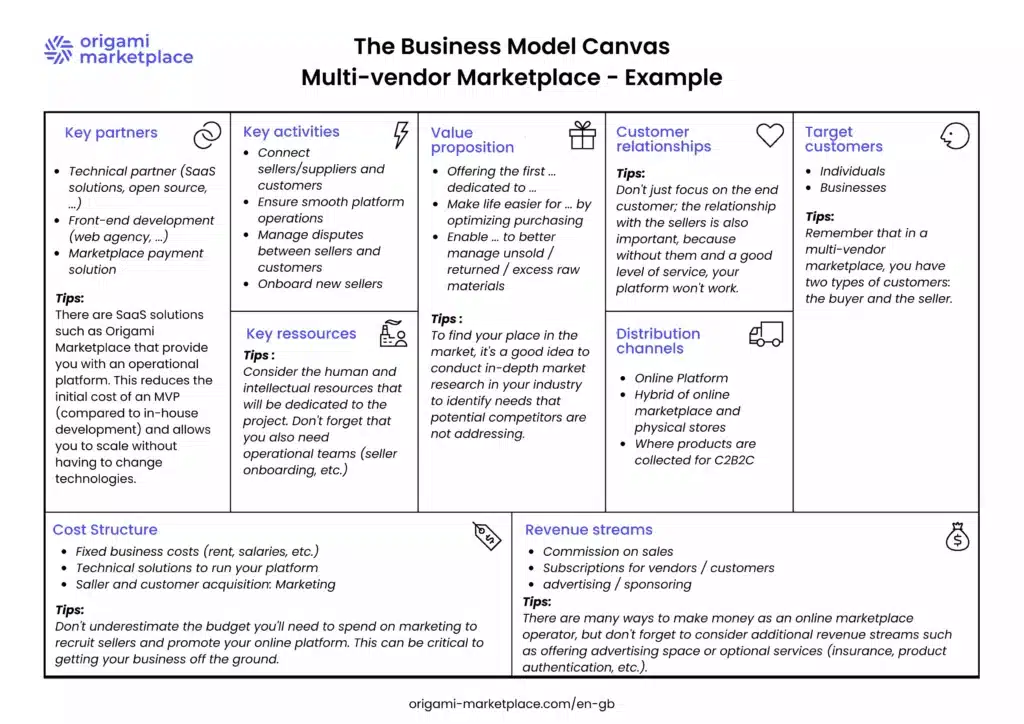
Step 4: Income options.
Step 5: Choose your online sales model.
There are several models for launching your online sales site, each with its own advantages and disadvantages:
Standard models include e-commerce, multi-vendor marketplace, and dropshipping. These models can then be combined to create hybrid online sales sites. This hybrid approach is often used, especially when combining e-commerce and marketplace.
Benefits:
- Quick and easy to set up
Complete control over user experience - Control over brand image
Disadvantages:
- High logistics costs (warehousing)
- Costly and risky to add new references
- Risk of stock-outs
- Significant investment, with risk borne solely by the brand.
Benefits:
- Rapidly increase the number of SKUs on the site with no financial risk for the marketplace operator
- Ability to sell your own products on the marketplace
- No storage of third-party products
- Simplified customer service (managed by the sellers, the marketplace operator only intervenes in the event of an unresolved dispute)
- Test customer appetite for new product categories
- Low risk of stock-outs – easier internationalization
Disadvantages:
- Less control over brand image (third-party customer service and fulfillment)
- Quality control of third party vendors
- Maintaining consistency of offering
- Platform creation requires strong external support (SaaS solutions, etc.)
Advantages:
- No physical inventory to finance
- Low initial investment
Disadvantages:
- Coordination with suppliers (products sent by suppliers, but after-sales service provided by the brand)
- Poor product knowledge
- Delivery times can be longer
- In case of product problem, the website is responsible
Step 6: Create your platform specifications.
At this stage, armed with the experience gained in the previous steps, you have a clear vision of the business model that suits you, an in-depth knowledge of your market and the existing competition, and you are aware of the resources you have or will need to bring your project to life.
Now it’s time to dive deeper into the practical side of things and outline the specific features you need to implement in your multi-seller marketplace. This thinking takes shape through the creation of your platform specifications, an essential document that must be as precise as possible about the nature of your project, your ambitions for it, and the direction you wish to take it. It’s the foundation on which all potential partners you’ll work with in the future will base their work, so it’s important that it accurately reflects your aspirations and needs.
Here are some tips for writing effective specifications:
- Clearly define your goals and market observations so your future partners can understand your unique positioning. This will help them tailor their proposal to meet your needs.
- Identify the features you want to include in your platform and specify the technical aspects of the project, such as a specific payment system or integration with an existing information system.
- Include references to platforms similar to the one you plan to create, as well as elements related to the graphic universe to guide and inspire your partners.
- Include your timeline expectations: when do you want to launch multi-vendor marketplace?
- Include the Business Model canvas you created in the previous steps to help your partners understand the ecosystem you plan to build.
To help you create this document, we’ve provided a downloadable template. This guide covers all the key features adapted to C2C, C2B and B2B marketplaces to help you effectively design and implement your project. The format has been specifically designed to provide a complete and accurate framework for your project.
Download our free marketplace specifications template.
Here you will find all the essential features to succeed in your C2C, B2C or B2B multi-vendor marketplace. This model provides a simple backlog to guide you through each step of your project.
If you are thinking about launching multi-vendor marketplace, you can set up a PoC with a minimum set of services and get a clearer idea of what you want for your marketplace. Your specifications could then be considered as the V2 of your project.
Step 7: Create the sales deck.
In addition to the technical creation of your platform according to your specifications, you need to start recruiting your first sellers. To do this, you need to build a sales deck that provides your sales team with the arguments they need to encourage sellers to join your marketplace.
This is an essential strategic step in growing your ecosystem and strengthening your market position. This introductory document must be studied to convince potential sellers of the unique benefits and opportunities your platform offers them. An effective sales deck for this target segment must combine clarity, persuasiveness, and value, highlighting the tangible benefits sellers can gain by joining your marketplace rather than another.
It should then focus on how your marketplace addresses their specific challenges and positions itself as an essential growth partner for their business. It’s also important to include a precise description of your marketplace’s goals and objectives, the positioning you want to achieve in the marketplace, relevant market data, and a comparative analysis that demonstrates your competitive advantage to help sellers feel more confident.
Your sales deck should include:
- A description of your marketplace, highlighting its unique positioning and mission.
- An overview of the typical challenges sellers face and how your platform offers concrete solutions.
- Information on your platform’s ease of use, sales management tools, and marketing support to maximize their success.
- A detailed presentation of the specific benefits offered to sellers, such as access to a larger customer base, competitive transaction fees, or extensive support from your teams.
- A summary of the steps involved in becoming a seller on your platform, illustrating the integration and sales process.
This sales deck should serve not only as a communication tool to attract new sellers, but also as tangible proof of your commitment to their success and to building a thriving and diverse seller community.
Step 8: Choose the right technology for your multi-vendor marketplace launch.
The success of your marketplace depends largely on the technology you choose. There are a number of different options available, each with its own advantages and limitations. Your choice of technology solution will be influenced by your resources, both financial and human, as well as the timeframe in which you plan to deploy your platform.
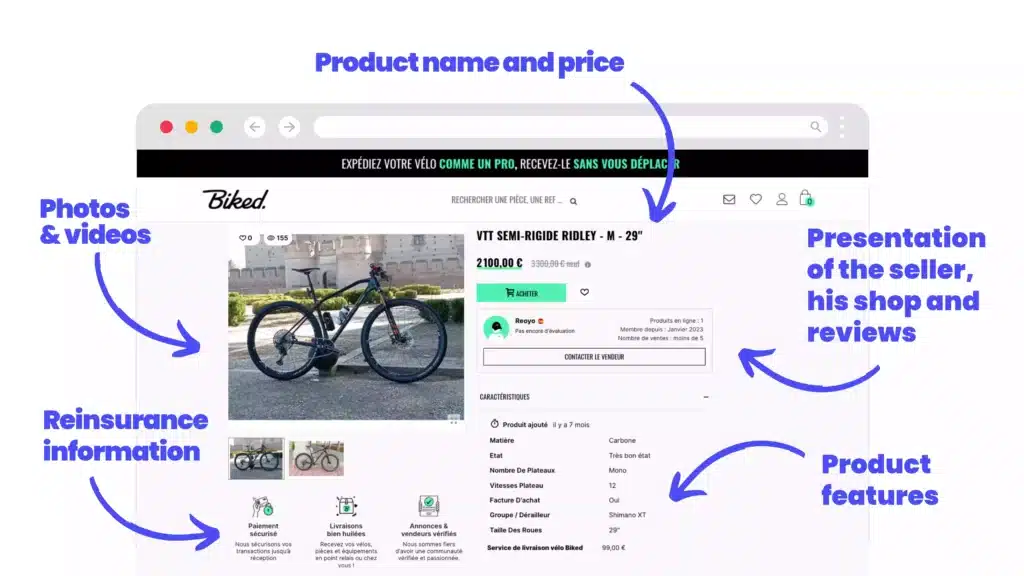
Here’s an overview of the main technology options for multi-vendor marketplaces:
- Software as a Service (SaaS) solutions, such as Origami Marketplace, are designed specifically for online marketplaces. They offer a one-stop package without the need for advanced technical skills. These platforms are ideal for rapid deployment and simplified scalability. They come pre-integrated with many essential services, making them easy to implement. In addition, these solutions offer fully customizable platforms and ongoing support.
- Open source or on-premises marketplaces allow you to take full ownership of your platform. This approach requires development skills and a thorough understanding of how multi-seller marketplaces work. You are responsible for integrating any necessary services, such as payment systems. This option offers complete customization, but requires a significant investment in time and resources.
- Create a marketplace using an open source CMS. Although there is no CMS dedicated to multi-vendor marketplaces, some e-commerce CMS can be customized using multi-vendor extensions. This method allows you to simulate the multi-vendor experience while leveraging the flexibility and richness of e-commerce CMSs.
The choice of technology for your marketplace must be carefully considered, taking into account your long-term goals, your budget, and your ability to manage the chosen technology. Take the time to compare the options and evaluate their benefits and limitations in relation to your specific project to make an informed choice that will support the success of your marketplace.
The pros and cons of each technology:
Benefits:
- Fast, efficient setup for rapid multi-vendor marketplace launch.
- Lower initial costs. You typically pay a monthly or annual subscription fee that covers access to the platform, updates, maintenance, and hosting costs.
- Full end-to-end support through all phases of the project.
- Regular updates and ongoing enhancements.
- Security and compliance: Integration of advanced security measures that meet strict security and confidentiality standards.
- Ease of use: Integration of services dedicated to the marketplace. – Platform scalability
Disadvantages:
- You’re renting rather than owning the solution: The SaaS solution has recurring costs. It’s important to note that these costs tend to decrease over time.
- Risk of the SaaS provider going out of business: Check the financial soundness of the solution before signing a contract.
Advantages:
- You own your solution, which means you have no recurring costs associated with its use.
- Complete customization because part of the solution is developed in-house.
Disadvantages:
- Potentially high upfront costs, as well as hosting and maintenance fees.
- The initial cost and investment required can be a risk to your business, as you’re paying for the entire solution before you’ve even launched your platform.
- Maintenance can be complex and require in-house developers.
Advantage:
- Low initial cost, since you only pay for the plugins.
Disadvantages:
- Lower quality of customer experience: your marketplace is more likely to resemble a cobbled-together site that doesn’t really inspire confidence in your potential customers. No scalability.
- Updating your platform is complex because it relies on plugins that weren’t designed for it.
Every update can put your business at risk.
Step 9: Regulatory and compliance for your multi-vendor marketplace.
While the success of an online marketplace depends primarily on technological innovation and market positioning, the importance of a solid, well-defined regulatory framework is critical.
Determine the legal status of the mult-seller marketplace.
The first step is to choose the appropriate legal status for your marketplace, a choice that directly affects your responsibility in the event of a dispute regarding the products sold on your platform.
Publisher status: By choosing this status, you take responsibility for the products sold on your platform. This option allows you to control and customize sellers’ listings to comply with local laws, giving you more control over product quality and presentation.
Hosting status: This status relieves you of legal responsibility for products sold by third-party sellers on your site. Although some verification is still required to ensure quality, as a host you may not modify listings without risking a change in status. Any necessary changes must be communicated to the sellers for implementation.
Key legal documents to get you up and running.
Regulatory compliance, protection of user rights, and transparency are the cornerstones of building trust and ensuring security in your marketplace. Here are the essential documents you need to prepare:
- Privacy policy: Essential for any e-commerce site, it details the management of users’ personal data in compliance with GDPR regulations.
- Cookie policy: Provides information on the use of cookies, which is essential for respecting privacy and personalizing the user experience.
- Legal Notice: Provides mandatory information about the identity of the company and the terms of use of the website, ensuring protection and legal clarity.
- General Conditions of Use (GCU): Establishes the contract between the platform and its users, clarifying rights and obligations.
- General Conditions of Sale (GCS) for sellers: Mandatory for each seller, they define the terms and conditions of transactions, ensuring transparency and trust.
- Terms of Service (TOS): define the rules for sellers and protect the marketplace by defining legal and quality requirements.
- Payment obligations: the marketplace may not collect money on behalf of third parties. This means that it cannot act as a financial intermediary and must use an external payment provider.
- Tax obligations: From 2023, marketplace operators must provide their sellers with clear information on their tax and social security obligations for each transaction. Platforms will also have to provide detailed data to the tax authorities.
- Annual summary document: Mandatory for reporting transactions to the tax authorities, facilitating tax filing and compliance for individual sellers.
- Ecollab” document: Marketplaces must also send the tax authorities a document that summarizes information about sales made by individuals on second-hand marketplaces. The Origami Marketplace solution allows you to automate the creation of this document to speed up its management.
The legal framework for marketplaces is essential but complex to set up. To create these legal documents, you should seek the assistance of marketplace and legal experts who will ensure that your documents comply with all applicable laws and regulations.
Conclusion.
The scoping phase of a multi-seller marketplace project is a complex and demanding affair that requires careful attention at every stage. From initial ideation to regulatory compliance, technology selection and business model, each decision plays a critical role in the future success of the platform.
The importance of expert guidance cannot be underestimated. By following these key steps and arming themselves with perseverance, flexibility and a spirit of innovation, marketplace founders can not only navigate the challenges of launching a multi-vendor marketplace, but also lay the foundation for a promising future for their business.
The road ahead is fraught with pitfalls, but with the right strategy, your marketplace can become a key player in the digital economy.
The scoping phase of a multi-seller marketplace project is a complex and demanding affair that requires meticulous attention at every stage. From initial ideation to regulatory compliance, technology selection and business model, each decision plays a critical role in the future success of the platform. The importance of expert guidance cannot be underestimated. By following these key steps and arming themselves with perseverance, flexibility and a spirit of innovation, marketplace founders can not only navigate the challenges of launching a multi-vendor marketplace, but also lay the foundation for a promising future for their business. The road ahead is fraught with pitfalls, but with the right strategy, your marketplace can become a key player in the digital economy.
👋 Future online marketplace operator!
Discover how the Origami Marketplace API and partner network can transform your business, regardless of size, with its innovative solution based on the marketplace model.


